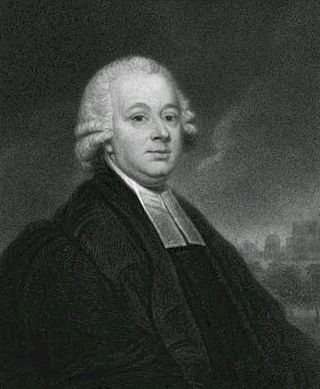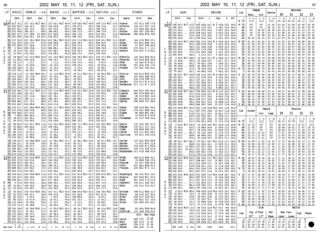External links
| International | |
|---|---|
| National | |
| Other | |
| Office overview | |
|---|---|
| Formed | 1832–current |
| Jurisdiction | Government of the United Kingdom |
| Headquarters | Taunton, Somerset |
| Parent Office | United Kingdom Hydrographic Office |
His Majesty's Nautical Almanac Office (HMNAO), now part of the United Kingdom Hydrographic Office, was established in 1832 on the site of the Royal Observatory, Greenwich (ROG), where The Nautical Almanac had been published since 1767. HMNAO produces astronomical data for a wide range of users, such as astronomers, mariners, aviators, surveyors, the military, Police, lawyers, religious groups, architects, schools, diary and calendar manufacturers, photographers and film crews.
In 1937, it became part of ROG and moved with it, when it moved away from Greenwich (and was renamed the Royal Greenwich Observatory) first to Herstmonceux Castle, near Hailsham in East Sussex in 1948, then to Cambridge in 1990. When the RGO closed in 1998 HMNAO was transferred to the Rutherford Appleton Laboratory, near Abingdon in Oxfordshire. In December 2006, HMNAO was transferred to the United Kingdom Hydrographic Office, which is based in Taunton in Somerset.

Greenwich Mean Time (GMT) is the local mean time at the Royal Observatory in Greenwich, London, counted from midnight. At different times in the past, it has been calculated in different ways, including being calculated from noon; as a consequence, it cannot be used to specify a particular time unless a context is given. The term GMT is also used as one of the names for the time zone UTC+00:00 and, in UK law, is the basis for civil time in the United Kingdom.

Nevil Maskelyne was the fifth British Astronomer Royal. He held the office from 1765 to 1811. He was the first person to scientifically measure the mass of the planet Earth. He created The Nautical Almanac, in full the British Nautical Almanac and Astronomical Ephemeris for the Meridian of the Royal Observatory at Greenwich using Tobias Mayer's corrections for Euler's Lunar Theory tables.

The United States Naval Observatory (USNO) is a scientific and military facility that produces geopositioning, navigation and timekeeping data for the United States Navy and the United States Department of Defense. Established in 1830 as the Depot of Charts and Instruments, it is one of the oldest scientific agencies in the United States, and remains the country's leading authority for astronomical and timing data for all purposes.

The Royal Observatory, Greenwich is an observatory situated on a hill in Greenwich Park in south east London, overlooking the River Thames to the north. It played a major role in the history of astronomy and navigation, and because the Prime Meridian passed through it, it gave its name to Greenwich Mean Time, the precursor to today's Coordinated Universal Time (UTC). The ROG has the IAU observatory code of 000, the first in the list. ROG, the National Maritime Museum, the Queen's House and the clipper ship Cutty Sark are collectively designated Royal Museums Greenwich.
John Pond FRS was a renowned English astronomer who became the sixth Astronomer Royal, serving from 1811 to 1835.

Arthur Matthew Weld Downing was an Irish mathematician and astronomer. Downing's major contribution to astronomy is in the calculation of the positions and movements of astronomical bodies, as well as being a founder of the British Astronomical Association.

John Russell Hind FRS FRSE LLD was an English astronomer.
Newcomb's Tables of the Sun is a work by the American astronomer and mathematician Simon Newcomb, published in volume VI of the serial publication Astronomical Papers Prepared for the Use of the American Ephemeris and Nautical Almanac. The work contains Newcomb's mathematical development of the position of the Earth in the Solar System, which is constructed from classical celestial mechanics as well as centuries of astronomical measurements. The bulk of the work, however, is a collection of tabulated precomputed values that provide the position of the sun at any point in time.

A transit of Mercury across the Sun takes place when the planet Mercury passes directly between the Sun and a superior planet. During a transit, Mercury appears as a tiny black dot moving across the Sun as the planet obscures a small portion of the solar disk. Because of orbital alignments, transits viewed from Earth occur in May or November. The last four such transits occurred on May 7, 2003; November 8, 2006; May 9, 2016; and November 11, 2019. The next will occur on November 13, 2032. A typical transit lasts several hours. Mercury transits are much more frequent than transits of Venus, with about 13 or 14 per century, primarily because Mercury is closer to the Sun and orbits it more rapidly.
Philip Herbert Cowell FRS was a British astronomer.
Leslie John Comrie FRS was an astronomer and a pioneer in mechanical computation.

A nautical almanac is a publication describing the positions of a selection of celestial bodies for the purpose of enabling navigators to use celestial navigation to determine the position of their ship while at sea. The Almanac specifies for each whole hour of the year the position on the Earth's surface at which the Sun, Moon, planets, and First Point of Aries is directly overhead. The positions of 57 selected stars are specified relative to the First Point of Aries.

The United Kingdom Hydrographic Office (UKHO) is the UK's agency for providing hydrographic and marine geospatial data to mariners and maritime organisations across the world. The UKHO is a trading fund of the Ministry of Defence (MoD) and is located in Taunton, Somerset, with a workforce of approximately 900 staff.
The Astronomical Almanac is an almanac published by the United States Naval Observatory (USNO) and His Majesty's Nautical Almanac Office (HMNAO); it also includes data supplied by many scientists from around the world. It is considered a worldwide resource for fundamental astronomical data, often being the first publication to incorporate new International Astronomical Union resolutions. The almanac largely contains Solar System ephemeris and catalogs of selected stellar and extragalactic objects. The material appears in sections, each section addressing a specific astronomical category. The book also includes references to the material, explanations, and examples. It is available one year in advance of its date.
The Nautical Almanac has been the familiar name for a series of official British almanacs published under various titles since the first issue of The Nautical Almanac and Astronomical Ephemeris, for 1767: this was the first nautical almanac to contain data dedicated to the convenient determination of longitude at sea. It was originally published from the Royal Greenwich Observatory in England. A detailed account of how the publication was produced in its earliest years has been published by the National Maritime Museum.
Edwin Dunkin FRS, FRAS was a British astronomer and the president of the Royal Astronomical Society and the Royal Institution of Cornwall.

Myanmar Standard Time, formerly Burma Standard Time (BST), is the standard time in Myanmar, 6.5 hours ahead of UTC. Myanmar Standard Time (MMT) is calculated on the basis of 97°30′E longitude. MMT is used all year round, as Myanmar does not observe daylight saving time.
A fundamental ephemeris of the Solar System is a model of the objects of the system in space, with all of their positions and motions accurately represented. It is intended to be a high-precision primary reference for prediction and observation of those positions and motions, and which provides a basis for further refinement of the model. It is generally not intended to cover the entire life of the Solar System; usually a short-duration time span, perhaps a few centuries, is represented to high accuracy. Some long ephemerides cover several millennia to medium accuracy.
Donald Harry Sadler (1908–1987) was an English astronomer and mathematician who developed an international reputation for his work in preparing astronomical and navigational almanacs. He worked as the Superintendent of His Majesty's Nautical Almanac Office from 1937 to 1971.
Flora Munro Sadler was a Scottish mathematician and astronomer. She was the first woman to hold a senior position in the Royal Greenwich Observatory and the first editor of the Monthly Notices of the Royal Astronomical Society.